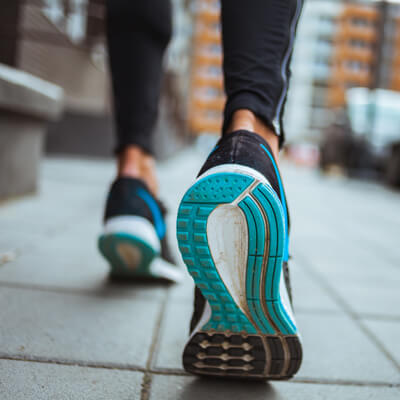Custom Orthotics at Campbell Chiropractic
 A custom orthotic is a device designed to align the foot and ankle into the most anatomically efficient position. They look like insoles but are biomechanical medical appliances custom-made to correct your foot imbalance. They work on your feet much like glasses work on your eyes—they reduce stress and strain on your body by bringing your feet back into proper alignment.
A custom orthotic is a device designed to align the foot and ankle into the most anatomically efficient position. They look like insoles but are biomechanical medical appliances custom-made to correct your foot imbalance. They work on your feet much like glasses work on your eyes—they reduce stress and strain on your body by bringing your feet back into proper alignment.
The plastic body of the insert helps to re-align the foot by redirecting and reducing certain motions that take place during the gait cycle. They fit into your shoes as comfortably as an insole and have the advantage of being made from precise imprints of your feet.
Who Needs Custom Orthotics?
Many medical conditions often stem from a biomechanical gait abnormality that can be addressed with these devices. Here are some common ailments related to poor foot biomechanics:
Achilles Tendonitis, an inflammation of the common tendon of the gastrocnemius and soleus muscles of the posterior compartment of the leg. Patients with equinus deformity and/or who run uphill are candidates for this disorder.
Iliotibial Band Syndrome, an inflammatory reaction at the side where this sliding occurs. It is very common among runners, especially if they run on a banked track or downhill.
Metatarsalgia is a symptom or a group of symptoms. These may include pain in the ball of the foot, with or without bruising, and inflammation. It is often localized in the metatarsal heads or might be more isolated in the area near the big toe. One of the hallmarks of this disorder is pain in the ball of the foot during weight-bearing activities. Sharp or shooting pains in the toes may also be present, and pain in the toes and/or ball of the foot may increase when the toes are flexed. Accompanying symptoms may include tingling or numbness in the toes.
It is common to experience acute, recurrent, or chronic pain due to this problem, which develops when something changes or threatens the normal mechanics of the foot. Ultimately, this creates excessive pressure on the ball of the foot, leading to metatarsalgia. Some of the causes of metatarsalgia include being overweight, age, improperly fitting shoes, high arches, arthritis, gout, or other inflammatory disorders, and issues like claw toes or hammer toes.
Morton’s Neuroma is a thickening of the tissue that surrounds the intermetatarsal nerve leading to the toes. When the nerve becomes squeezed and irritated, it causes painful symptoms. Neuroma patients occasionally complain of a “pins and needles” sensation that spreads through their fourth and fifth toes or of a feeling akin to hitting their “funny bone.
A neuroma can occur in response to the irritation of a nerve by one or more factors, such as abnormal foot function or mechanics, improper footwear, and previous trauma to the foot.
Plantar Fasciitis is an inflammatory condition that occurs where the plantar fascia attaches to the medial tuberosity of the calcaneus. Over-pronation results in a constant tugging of the aforementioned attachment site. Inflammation then results from this constant insult to the local tissues.
When the patient is off weight bearing, scar tissue begins to repair the injury site. When the patient resumes weight-bearing, the scar tissue is torn, resulting in acute pain. This explains why patients with this disorder typically experience the most pain when they get out of bed or stand after a period of sitting.
Sacroiliac Syndrome is a painful inflammatory condition of the sacroiliac joints. The patient generally experiences pain in the buttock and thigh regions. It is typically aggravated by sitting for long periods. Quite frequently, it is caused by an injury such as would be sustained by a fall on the buttocks or during a lifting activity. However, some evidence suggests that chronic irritation from abnormal foot mechanics is also a possible cause.
Shin Splints involve a muscular over-use scenario involving the Tibialis anterior muscle and/or the Tibialis posterior muscle of the leg. Beyond the fact that much pain results from the entire process, the pressure within the fascial covering can be sufficient to “choke off” the blood supply to the involved musculature, further adding to the insult on the tissue.
Should I Wear Them All The Time?
The longer you wear your custom orthotics, the more benefits you will get from them. If your daily activities vary to the extent that you change your footwear, then you should have a second pair made for that specific activity (i.e., going to the gym after work).
Will My Muscles Get Weaker?
No, orthotics will not reduce muscle tone. They will help position your foot so you will use the right muscles at the right time, minimizing fatigue and allowing your muscles to be used more efficiently.
Take That First Step Toward Feeling Great
Contact Campbell Chiropractic today to schedule your first appointment!
CONTACT US
